
© Image by Hugo Glendinning.
Mathew Bourne / New Adventures
Sleeping Beauty, A Gothic Romance
Washington, Kennedy Center Opera House
12 November 2013
www.new-adventures.net
www.kennedy-center.org
Choreographer Matthew Bourne knows a thing or two about telling stories and reinventing ballet classics. Hailed as one of the biggest names in British dance, Bourne achieved worldwide recognition with his 1995 gender-bending revision of Swan Lake, featuring a flock of muscular and tantalizing male swans. Three years earlier, he put a Dickensian spin on another Tchaikovsky classic, The Nutcracker, setting the story in a grim orphanage. The new production of The Sleeping Beauty, which the choreographer and his company, New Adventures, brought to the Kennedy Center Opera House in November, is the final instalment of the Bourne-Tchaikovsky trilogy.
The original Sleeping Beauty (1890) is the pinnacle of classical dance. Opulent and magical, it was the official ballet of the St. Petersburg Imperial Court and the creative apotheosis of two geniuses, Tchaikovsky and Marius Petipa. The ballet’s plot is based on Charles Perrault’s fairy tale of a cursed princess who falls into a 100-year sleep to be awakened by a true love’s kiss. The rich and exquisite choreography of Petipa has never failed to create onstage a world of wonder and enchantment, while Tchaikovsky’s divine music has ensured the ballet’s eternal life. An awakening of the imagination itself, the original Sleeping Beauty remains an ineffaceable icon of the best traditions of classical ballet.
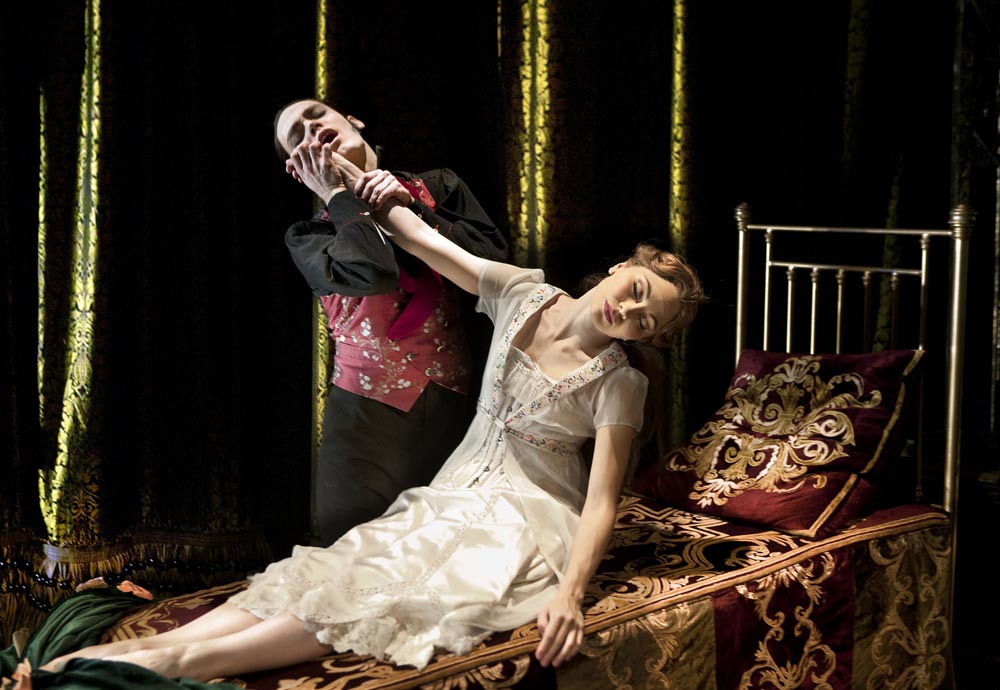
© Simon Annand. (Click image for larger version)
Bourne was inspired to tackle the iconic ballet during his visit to Tchaikovsky’s country estate in Russia, in 2011. (The timing was also right – New Adventures was approaching its 25th anniversary and the brand new production seemed like a perfect way to celebrate his company’s birthday.) And he took his task of updating and reimagining the famous classic to heart, taking more liberties with the music as well as the original story than one might have expected.
Tchaikovsky here took the hardest hit. Bourne stated that he “tried to be true to the music but have open mind.” What this really means is that the original score, to serve his updated story, had to undergo a hefty alteration, including “edits, reordering and cuts.” (The adapted score was recorded by a group of musicians credited in the program as “The Sleeping Beauty Orchestra” and the heavily amplified recording provided a soundtrack during the performance.)
To customize the old-time classic to modern tastes and sensibilities, Bourne wrote his own story of Aurora and the evil curse. By doing so, the choreographer also adjusted the timing of the events. The scene of Aurora’s christening takes place in 1890; her coming-of-age celebration, in 1911; and her awakening and wedding in the present time.
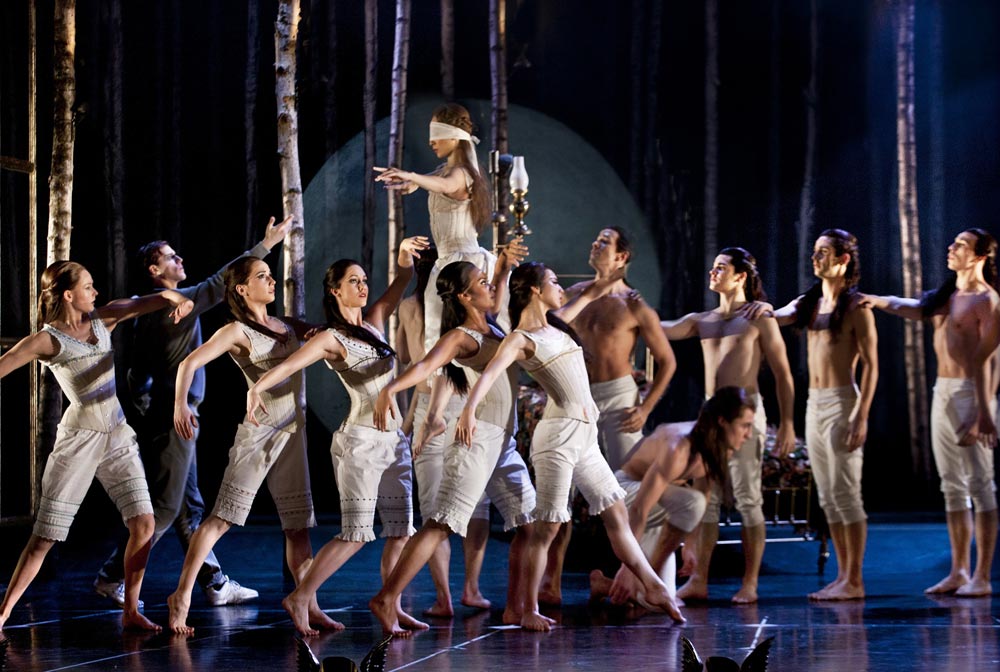
© Simon Annand. (Click image for larger version)
Bourne also tweaked the romance between Aurora and her prince, dissatisfied with the 1890 ballet scenario, which, according to him, had two problems: “no love story and no narrative tension in the last act once the princess has woken up.” So in his version, Aurora falls in love before she falls asleep. Her sweetheart is not a royal prince, but a commoner – a sweet and humble gardener named Leo. To jazz up the drama, Bourne introduces a new character – a devastating and devastatingly handsome Caradoc, a son of Carabosse, the evil fairy, who laid a curse upon the infant princess. He has a mission to keep his mother’s revenge alive and brings some extra heat to the Aurora’s romantic adventures.
To expand the production’s mass appeal even further, Bourne gave his narrative a gothic dimension, populating the ballet with vampires – hence the production subtitle “A Gothic Romance.” In fact, the theme of the gothic and the dark ensnares this Beauty like a giant spider web. The fairies (half are male and half female) who bring the newborn princess their gifts and blessings are a wild and scary lot. When they circle Aurora’s crib, like a flock of ravens, you fear for the infant. Their leader, Count Lilac, looks like a main character from the movie “Interview with the Vampire.” At the end of the second act, he grows a pair of fangs and heartily sinks his teeth into Aurora’s love interest, Leo, to preserve his youthfulness through the princess’s long sleep. True, the vampires make it possible to have a love story last through a century, but a fairy tale for all ages this Beauty is not.
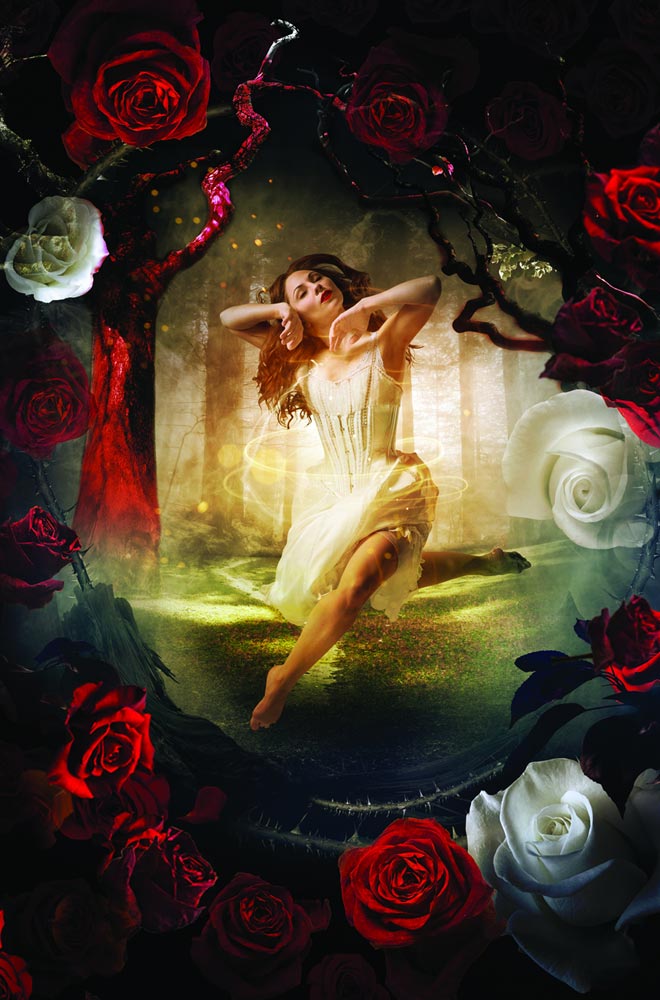
© Hugo Glendinning. (Click image for larger version)
Throughout the piece, Bourne’s choreography is highly theatrical and vigorous but only intermittently compelling; his movement vocabulary is limited and can hardly sustain the demands of Tchaikovsky’s enduring music. He is at his most inventive when he tackles intimate rather than grand scenes of the production. The emotionally-charged pas de deux between Aurora and Leo in Act II is perhaps the most memorable dancing moment of the piece, notable for its genial ardor and spontaneity.
This Beauty is blessed with superlative set designs and magical lighting. Bourne’s long-time collaborator, Lez Brotherston, created spectacular sets and over 250 elaborate costumes, imaginatively outfitting the stage and the dancers. As the story unfolds, the gorgeous decorations provide a visually striking transition from one time period to the next: from a formal Victorian Royal palace where we first meet Aurora as a baby, to a sunlit Edwardian garden party during which the princess celebrates her birthday, to the present-day posh night club where Aurora’s wedding celebration takes place.
Puppeteer Sarah Wright created an adorable rod marionette and taught her how to throw tantrums and keep the palace staff quite literally on their toes during the first act. Giving the baby Aurora such prominence in the beginning of the ballet was the most brilliant invention of Bourne’s scenario. The cute little puppet, adorned in a lace bonnet, had a stunning voice and dynamic personality to boot, easily claiming the audience’s hearts during the first act.

© Simon Annand. (Click image for larger version)
Yet the chief pleasure of the evening was the highly-spirited and convincing performance of the entire cast. The dancers wholeheartedly threw themselves into the vortex of Bourne’s high drama, spicing up the action onstage with the inexorable power and passionate fervor of their dancing.
On opening night, you couldn’t take your eyes off Hannah Vassallo’s Aurora – a beautiful, feisty, and strong-willed young woman. Her every step, every movement pulsated with vibrant energy and verve. Chris Trenfield, in the role of her darling Leo, came across as a good-hearted and gentle soul, with loads of charm and affection. Tom Jackson Greaves had a double turn in the roles of the wicked fairy Carabosse, and her murderous son, Caradoc. As Caradoc, he was particularly good – a Byronic hero personified: at once arrogant and cynical, cunning and charismatic. And Christopher Marney gave a stirring portrayal of Count Lilac, an enigmatic master vampire who orchestrated the course of the whole action with an unshakable will and wicked wit.












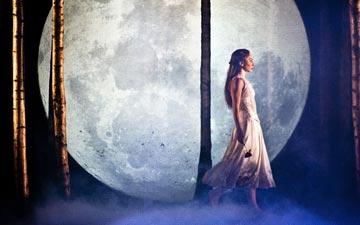

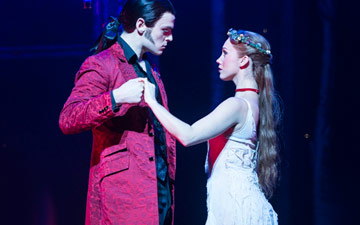
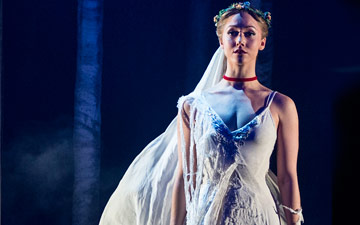
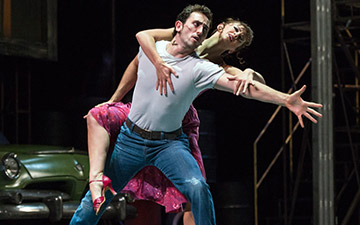
You must be logged in to post a comment.